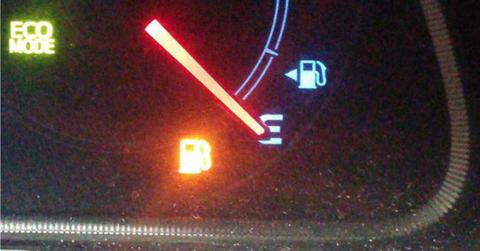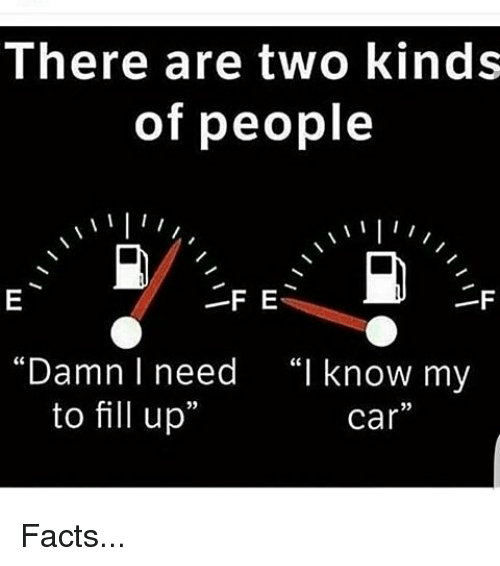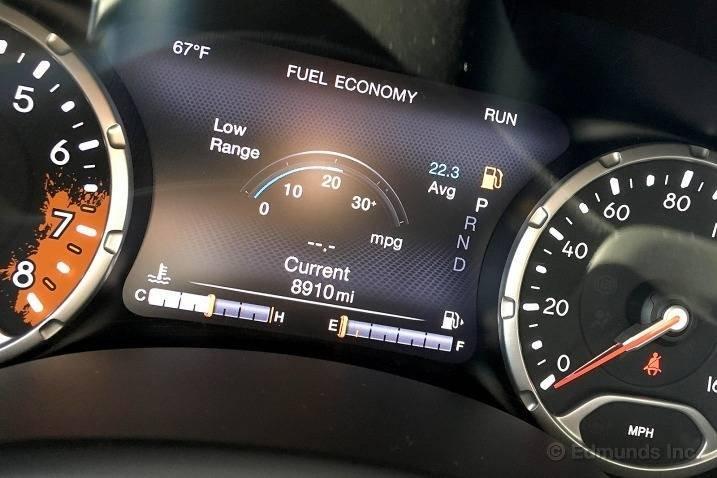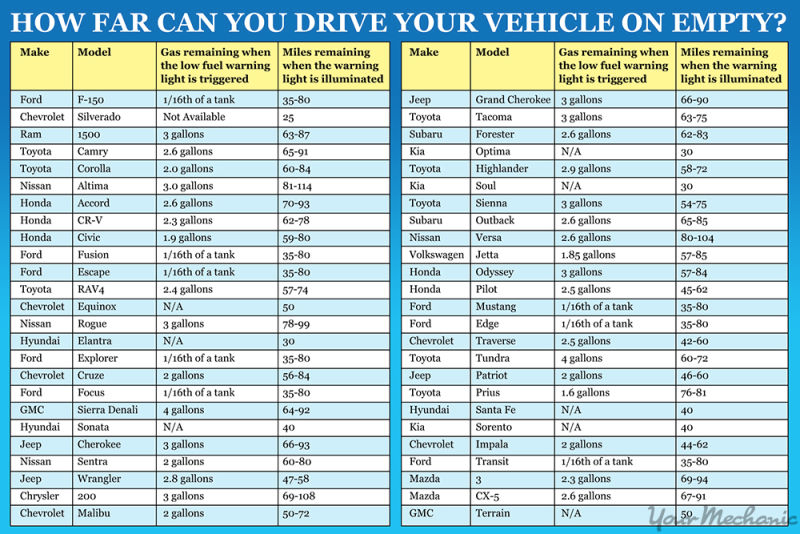This Is How Far You Can Actually Drive Once Your Gas Light Comes On
Updated Oct. 23 2018, 12:01 p.m. ET
We all have that one friend who lives on the edge.
You'll be cruising along the highway and the exit to their house is still about 6 miles away. The gas light has been on three exits back and you pass gas station after gas station and they're still not stopping.
When you bring it up to them in a half-joking kind of way, they hit you with this.
Now there are some people who will go so far as to say that the warning light is a conspiracy encouraged by big gas to give you range anxiety while you're driving, but realistically it's just a nice way for car manufacturers to let you know that you should probably get some fuel in your whip before you're left stranded somewhere.
It's still nice to know just how much of a distance you have once that light comes on and thankfully, the peeps at YourMechanic compiled a list of some of America's most popular 2015 car models and the estimated distance left on each car after the warning light comes on.
The list might not include your car, but you should be able to extrapolate your estimated mileage based on the type of car you drive.
For instance, most sedans have an average range of 30 miles to go from when the light comes on, but bigger SUVs actually have nearly triple that range with a 90 mile approximate average before they need to top off.
Now you might be saying to yourself, "Well my car has a range indicator that tells me precisely how many miles I have left to go, so screw your dumb little chart."
The problem with those numbers is that they're not always accurate. Those estimates vary contingent on your driving habits, like whether you're on the highway or driving on local streets. If it's cold outside and you're blasting the heat or are in stop-and-go traffic those factors could impact just how much gas you're burning in your car.
Check out the infographic to see if your car's model is on the list. Remember, if it isn't, just find a comparable car in one on the list's class. For example: if you've got a Volkswagen Passat, it should take you the same distance as a Hyundai Sonata, give or take a few miles, once that light comes back on (in this case, about 40 miles).
Hybrid vehicles like the Toyota Prius have a way longer range than most other sedans in its class: a whopping 76-81 miles once that light turns on.
And although many vehicles in the same class have similar gas warning light range capacities, that's not true for all models.
For instance, the Toyota Tacoma and Chevy Silverado are both pick-up trucks, but the Tacoma has an average of 63-75 more miles of distance left once that gas light comes on. The Silverado, on the other hand, gives you about 25.
All of this news might be comforting for drivers who like to live on the edge or want to stretch that gas tank out until it's pay day, but know this: it's almost always better to fill up sooner than later.
Cars that stall after running out of gas can suffer long-term engine damage, especially on an older vehicle. Not only that, but fuel doesn't just power your car, it serves other functions like cooling the fuel pump motor in your ride. So constantly running your car on empty and letting it deplete can really mess up a perfectly functioning automobile.
So even though you've got a good amount of miles left on your car until you need to fill up once that light comes on, it's better to just get some gas before it dips too low.
I know Kramer makes it look like living dangerously is a lot of fun.
But it really isn't worth it. Unless you're into getting stranded and having to walk to find some gas.



